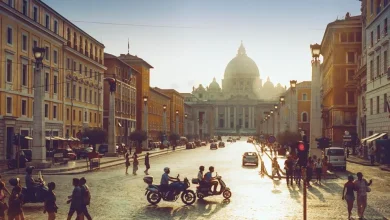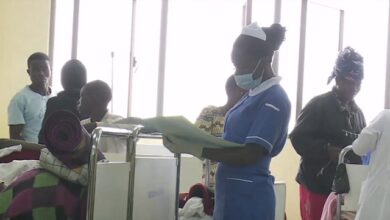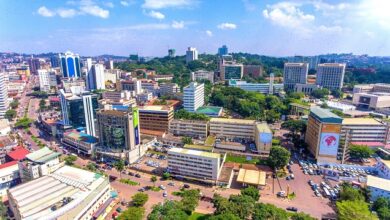The Uganda Martyrs and how they were killed
The place that became famous for the killing of the martyrs had originally been designated as a killing field for royals, nobles, and those condemned to death by the king.

Kampala: The Uganda Martyrs were a group of brave individuals who stood firm in their faith, even in the face of persecution and death.
They hold immense historical and cultural significance in Uganda. The Uganda Martyrs were a group of 22 Catholic and 23 Anglican converts to Christianity in the historical kingdom of Buganda (now part of Uganda).
They were executed between 1885 and 1887 on orders of Mwanga II, the Kabaka (king) of Buganda.
Their unwavering faith and sacrifice inspired many others to convert to Christianity. Today, over 80% of Uganda’s approximately 42 million people are Christians.
The killings of the martyrs resulted in increased financial support from home governments (such as Britain, France, and Germany) to facilitate missionary activities in Buganda. This support helped establish churches across the kingdom and contributed to the spread of Christianity in Uganda.
They are a source of pride for the universal church and hold great significance for Ugandans and Africa as a whole. Their blood is considered the seed of faith and the growth of Christianity in Uganda.
In summary, the Uganda Martyrs’ sacrifice left an indelible mark on the country, fostering the growth of Christianity and inspiring generations to come. Their memory is commemorated annually on Martyrs’ Day, which serves as a reminder of their enduring impact.
How they were killed
The place that became famous for the killing of the martyrs had originally been designated as a killing field for royals, nobles, and those condemned to death by the king. The gazetting was done by King Kyabagu Kabinula, the 25th king of Buganda, who reigned from 1750 to 1780.
However, the fire that burned the convicts was never lit in this place. Instead, it came from a special fire pit in the palace called Gombolola. In the Ganda king’s palace, the fire at Gombolola never burned out as long as a king reigned. It was only extinguished upon the death of a king and re-lit after the deceased’s successor was enthroned.
Ssenkole, who was the deputy executioner, was also the official carrier of the sacred fuse, also known as the royal fire. The sacred fuse was made of a bark-cloth rope. This was used to carry the fire from Gombolola in the palace to Nakiyanja, the killing site.
The barkcloth did not produce flames when burned; it only emitted smoke, which allowed it to keep the fire from the palace in Mengo to Namugongo, where the execution took place.
On the morning of the execution, Ssenkole brought the sacred fuse from his home in Buwate to a spot then called Suula Engaga (now the location of the Catholic Shrines). Flames were made on reeds from the sacred fuse and taken to Nakiyanja for the burning of the condemned people. Ssenkole followed the traditional ritual of execution, which prohibited the presence of the guardian of the sacred fuse at the actual scene of a large execution.
- Saint Joseph Mukasa Balikuddembe: He was one of the first three martyrs to be killed. Saint Joseph Mukasa Balikuddembe was executed on November 15, 1885. He was a Catholic convert and was beheaded and burned for refusing to renounce his faith.
- Saint Andrew Kaggwa: Another early martyr, Saint Andrew Kaggwa, was executed on June 3, 1886. He was a Catholic convert as well, and he met his end by beheading.
- Saint Denis Ssebuggwawo: Like the others, Saint Denis Ssebuggwawo was a Catholic convert. He was also executed on June 3, 1886, and suffered the same fate as Saint Andrew Kaggwa beheading.
- Kakumba Makko: An Anglican from Buganda, he was dismembered and burned on January 31, 1885, in Busega.
- Yusuf Rugarama: An Anglican from Ankole, he suffered the same fate as Kakumba Makko on the same day in Busega.
- Nuwa Sserwanga: An Anglican from Buganda (Ngeye clan), he was also dismembered and burned on January 31, 1885, in Busega.
- Yosefu Mukasa Balikuddembe: A Catholic from Buganda (Kayozi clan), he was beheaded and burned on November 15, 1885, in Nakivubo.
- Musa Mukasa: An Anglican from Buganda (Ffumbe clan), he was speared on May 25, 1886, in Munyonyo.
- Ponsiano Ngondwe: A Catholic from Buganda (Nnyonyi Nnyange clan), he was beheaded and dismembered on the same day in Ttakajjunge.
- Antanansio Bazzekuketta: A Catholic from Buganda (Nkima clan), he was dismembered on May 27, 1886, in Nakivubo.
- Gonzaga Gonza: A Catholic from Busoga (Mpologoma clan), he was beheaded on the same day in Lubowa.
- Joseph Mukasa:
Joseph Mukasa was an important member of the royal household and a Catholic.
He reproached Kabaka Mwanga II for the massacre of Anglican missionary Bishop James Hannington and his colleagues.
On November 15, 1885, Mwanga had Mukasa beheaded for his defiance.
- Charles Lwanga:
After Joseph Mukasa’s execution, Charles Lwanga took over as the leader of the Christian pages.
He secretly baptized those boys, who had only been catechumens.
On June 3, 1886, Lwanga and the other pages were herded away to the village of Namugongo.
Three of them Pontian Ngondwe, Athanasius Bazzekuketta, and Gonzaga Gonza were murdered en route.
The survivors were imprisoned for a week and then burned alive.
Other martyrs included Ambrose Kibuka, Anatole Kiriggwajjo, Achilles Kiwanuka, Mugagga, Mukasa Kiriwawanvu, Adolphus Mukasa Ludigo, Gyavira, and Kizito.
- Matthias Mulumba, Andrew Kaggwa, and Noe Mawaggali
Matthias Mulumba, an assistant judge to a provincial chief, was martyred.
Andrew Kaggwa, chief of Kigowa, also faced execution.
Noe Mawaggali, a Roman Catholic leader, was another victim of Mwanga’s persecution.
- Jean Marie Muzeyi:
On January 27, 1887, Jean Marie Muzeyi, one of the pages, was beheaded.
These are just a few of the martyrs, and there were many more who courageously stood up for their faith during this challenging time.
They are revered as saints and are commemorated annually on June 3rd. Their unwavering faith and sacrifice continue to inspire generations.
Do you have an advertisement or article you want to publish? Mail us at theugreports@gmail.com or WhatsApp +256757022363.






